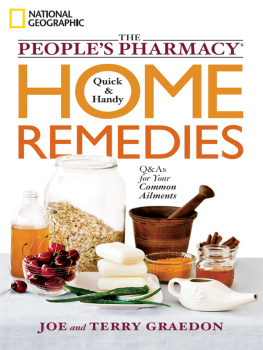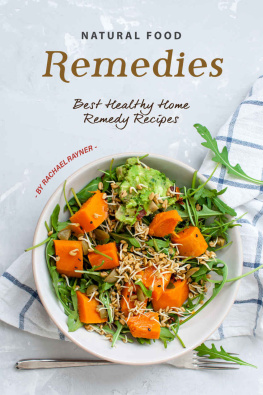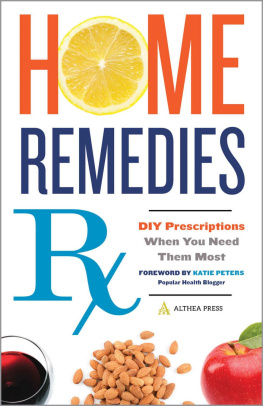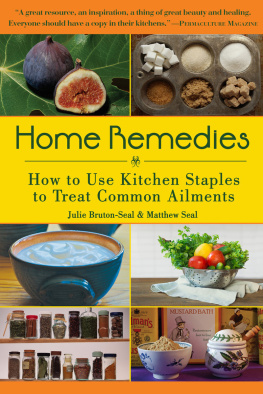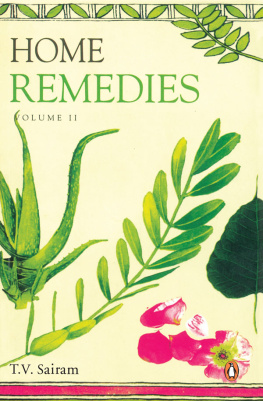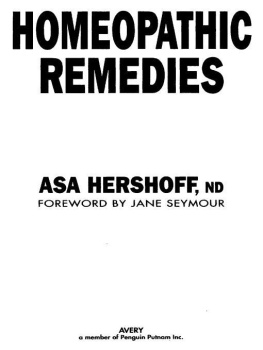ALSO BY JOE AND TERESA GRAEDON
The Peoples Pharmacy-2 (Avon, 1980)
Joe Graedons The New Peoples Pharmacy: Drug Breakthroughs of the 80s (Bantam, 1985)
The Peoples Pharmacy, Totally New and Revised (St. Martins Press, 1985)
50+: The Graedons Peoples Pharmacy for Older Adults (Bantam, 1988)
Graedons Best Medicine: From Herbal Remedies to High-Tech Rx Breakthroughs (Bantam, 1991)
The Aspirin Handbook: A Users Guide to the Breakthrough Drug of the 90s (Bantam, 1993) with Tom Ferguson, M.D.
The Peoples Guide to Deadly Drug Interactions: How to Protect Yourself from Life-Threatening Drug/Drug, Drug/Food, Drug/Vitamin Combinations (St. Martins Press, 1995)
The Peoples Pharmacy, Completely New and Revised (St. Martins Press, 1996, 1998)
Dangerous Drug Interactions: How to Protect Yourself from Harmful Drug/Drug, Drug/Food, Drug/Vitamin Combinations (St. Martins Press, 1999)
The Peoples Pharmacy Guide to Home and Herbal Remedies (St. Martins Press, 1999)
Best Choices from The Peoples Pharmacy (Rodale, 2006, 2007)
Favorite Home Remedies from The Peoples Pharmacy (Graedon Enterprises, Inc., 2008).
Favorite Foods from The Peoples Pharmacy: Mother Natures Medicine (Graedon Enterprises, Inc., 2009)
Recipes & Remedies from The Peoples Pharmacy (Graedon Enterprises, Inc., 2010)
ALSO BY JOE GRAEDON
The Peoples Pharmacy: A Guide to Prescription Drugs, Home Remedies, and Over-the-Counter Medications (St. Martins Press, 1976)
No Deadly Drug (Pocket Books, 1992), a novel by Joe Graedon and Tom Ferguson, M.D.
ALSO BY TERESA GRAEDON
Chocolate without Guilt (Graedon Enterprises, 2002), a cookbook by Terry Graedon and Kit Gruelle
THE
PEOPLES PHARMACY
Quick & Handy
HOME
REMEDIES

THE
PEOPLES PHARMACY
Quick & Handy
HOME REMEDIES
Q&As for Your Common Ailments
JOE and TERRY GRAEDON

IMPORTANT NOTE TO READERS
This book is not a substitute for the medical advice or care of a physician or other health care professional. The reader must consult a physician in matters relating to his or her health, especially with regard to any signs or symptoms that may require diagnosis or medical attention. Any health problems that do not get better promptly or get worse should be evaluated by an appropriate clinician and treated properly.
Home remedies are rarely tested in a scientific manner. They should not be considered a substitute for proper medical care. The reader should not assume that the home remedies discussed in this book are safe in all situations. Every treatment has the potential to cause some side effects for some people.
If you suspect that you or someone you care for is experiencing an adverse reaction from an herb, drug, dietary supplement, or home remedy, please consult a knowledgeable health professional immediately.
Throughout this book, the authors make references to specific products whose effects have been reported to them by readers, listeners, and website visitors. In publishing this book, the National Geographic Society does not endorse the use of any specific brands or products.
This book is dedicated to the thousands
of readers and listeners who have
contributed remedies, recipes, and
commonsense suggestions to
The Peoples Pharmacy over the past
three decades. Without their input, this
book would never have been possible.
We also dedicate it to the grandparents
who have passed down their wisdom
from generation to generation. It must
not be forgotten.
CONTENTS
FAVORITE FOODS
BREAKFAST
LUNCH
DINNER
SIDES
Introduction
T RADITIONAL ADVICE FROM AROUND THE WORLD is remarkably similar in its commonsense approach to staying healthy: Get plenty of exercise, sleep, and good food. Over the past 15 or 20 years, researchers have discovered that many ideas people once dismissed as old wives tales have solid scientific underpinnings. Home remedies like cranberry juice for urinary tract infections or vitamin-D-rich cod-liver oil as a winter tonic have been proven helpful.
Grandmothers wisdom fell out of favor with the medical establishment decades ago, however, and even the public has forgotten much of it. In keeping with a typically American fixation on all things instant, people have come to expect a pharmaceutical fix for their problems. Some doctors believe, with reason, that their patients would be disappointed to leave the office without a prescription.
Prescription drugs can be lifesaving, and our intention certainly isnt to disparage pharmaceuticals or the doctors who prescribe them. Millions of Americans depend on medications, and no one should ever change or discontinue a treatment regimen without the guidance of a doctor.
What concerns us, and the reason we conceived this book, is that we constantly hear from people who feel helpless and hopeless about caring for themselves and preventing the kinds of chronic conditions for which medication is required. As a culture, weve largely lost sight of how to live and eat so we can be healthy.
People have probably been using food as medicine for millennia. Studies have shown that other animals, too, seek out foods that may function as laxatives, antibiotics, or antidotes to toxins.1 For thousands of years, people in regions as diverse as China, Japan, India, and ancient Greece have made use of food for its healing properties. The Greek physician Hippocrates, who lived 2,500 years ago, once famously proclaimed, Let food be your medicine. (Hippocrates is also famous as the father of medicine and the originator of the Hippocratic Oath.) In recent years, as more researchers have become interested in the potential health benefits of various foods, scientific evidence that supports a food-as-medicine approach has begun to mount.
When we talk about using food as medicine, we mean two distinct things. First, we mean that the foods we choose to consume regularly can have a major impact on our health, and that even small changes to our diets may have significant long-term benefits, including the prevention of many chronic conditions. More intriguing is the possibility that certain foods might have specific therapeutic activities. People in India have been using turmeric, the yellow spice in curry and yellow mustard, for thousands of years. It adds a very special taste to foods, but it also fights inflammation. A surprising amount of research on curcumin, the active ingredient in turmeric, suggests great promise for using the spice to treat cancer, arthritis, and heart failure.2 Studies indicate that beets are another example of a delicious food that can help control a common problem: high blood pressure.3 Studies show that walnuts can lower cholesterol, help prevent heart disease,4 and perhaps even help cut ones risk of developing type 2 diabetes.5 Researchers have also confirmed that blueberries and other antioxidant-rich foods may help boost cognitive function in older people.6 And the list goes on. This book contains dozens of other examples of literally using food as medicine to treat common ailments.
We also like to think of foods as home remedies. Weve been collecting home and herbal remedies for decadesever since the Peoples Pharmacy came into existence in 1976. Whenever we hear of a new remedy, we take note. If we hear the same remedy repeatedly, we like to share it. Our motto is, if it wont hurt, might help, and doesnt cost too much, its worth considering. While not all remedies work for all people, not all pharmaceuticals do either.

